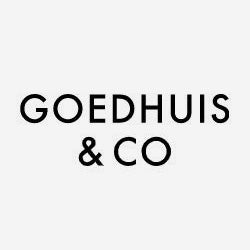
Last night we hosted a dinner in honour of Helmut Dönnhoff, the mastermind behind Weingüt Dönnhoff, the wine domaine that has been in his family since 1750. We have long wanted to create a dinner with Helmut at the helm so to speak, and with the release of the 2010 vintage, we thought this the perfect time to do so.
We pulled out some modern “˜big guns’ (those fantastic German magnums that look more like double-magnums in size) and Helmut generously opened up his cellar to us as well. Unlike the Mosel that really specializes in the German “˜fruity’ (off-dry and sweet) styles, the Nahe can produce the whole gamut equally well – from the gentle and light to the intense and complex in the dry style as well as the fragrant and zingy to the penetrating and honeyed in the fruity style. We poured all types last night from multiple vintages. It was a true Bacchanalian feast yet in the most sophisticated and civilized setting.

The line-up and the food pairings were as follows:
APERITIF:
Tonschiefer Dry Slate 2009 in Magnum
A delicious and quite grand wine to start with. It is produced from grey slate (like the blue slate in the Mosel), giving it a lacier touch.
PRE-STARTER:
Spiced Pork Rillettes, green apple jelly crisp bread
Schlossbockelheimer Felsenberg Dry 2009 in Magnum
Schlossbockelheimer Felsenberg Spätlese Trocken 1998
A very interesting pairing that Helmut used to show how a dry Riesling can age. The 2009 Felsenberg displayed a notable intensity yet with also a wonderful roundness and structure. Its volcanic soil is known for producing more powerful wines than the Tonschiefer and this was marked, particularly in this wine. It paired perfectly with the creaminess and spiciness (cumin seeds) of the rillettes. The 1998 was just beautiful with notes of forest floor, truffles, gunflint and minty notes. Helmut felt that it might be a bit too “˜green’ or acidic for some as it did not display the same level of voluptuousness as the 2009. It was still absolutely delicious and à point though it did not accompany the rillettes as well.
STARTER:
Pancetta Wrapped Scallops, peas, potato wafers
Oberhauser Leistenberg Kabinett 2010
Oberhauser Leistenberg Kabinett 2002
Again an interesting pairing that expressed the vintage characteristics. The 2010 was incredibly youthful (bottled only a few weeks ago) with notes of candied peach, grapes and citrus fruits. Despite its silky “˜grey slate character’, it has notable dry extract. Helmut used this wine to explain that 2010 is a vintage that has incredible potential and which will require some time in the cellar to express itself – and will be longer lived than the hedonistic 2009s. This seems to echo other vintage comparisons such as in Bordeaux. The 2002 was beautifully delineated and still incredibly youthful with notes such as lanolin, chamomile and lime zest. Its soft and gentle persona paired remarkably well with the creaminess of the scallops.
MAIN:
Rare Roasted Venison Filet, mash potato, black cabbage, wild mushrooms
Fürst, Centgrafenberg Spätburgunder 2007, Franken
Oberhauser Brücke Spätlese 1989
The most eye opening pairing of the night – a traditional game pairing of Pinot Noir (from a friend of Helmut’s) and an aged spätlese. Older spätleses are apparently drunk in Germany with game dishes such as venison and wild boar so we were particularly intrigued to see how well it actually worked. In my book: brilliantly. The Pinot was delicious with a palate of sweet red and black bramble fruits, subtle toasted oak and underlying tones of pink grapefruit. But the star of the show (and to me of the night) was the 1989 Oberhauser Brücke Spätlese. It embodied wonderful intensity and youthful energy with aromas of cut straw, dried fruits and mentholly notes. Amazingly complex.
Helmut discussed how some people find spätlese difficult to know when to drink. For him, within the first few years of its life, one drinks it as an aperitif, on its own, with cheese after dinner or as the last wine of a long meal as a “˜pick me up’ (lovely thought). Or, it needs to be aged. After 20 years or so, it loses much of its sweetness yet still keeps its tenderness intact and can nicely accompany richer meat dishes. He was right. And he still felt the 1989 had years to go.
CHEESE:
Comte & Gorgonzola, apple paste & chutney, sourdough crackers
Schlossbockelheimer Felsenberg Spätlese 2009
Niederhauser Hermannshöhle Auslese Gold Cap 2002
A first circle pairing starting with a richer version of the first dinner wine and the granddad of them all, the Hermannshöhle Auslese. Many people consider Hermannshöhle to be the greatest in the Nahe and one of the grandest in all of Germany. Comprised of grey slate, it produces wines that are lacy and smooth yet with such fantastic concentration and intensity. A bit like Wehlener Sonnenuhr but with even more power and density because this is the Nahe, of course!
All in all, it was a fantastic night and we greatly thank Helmut for coming over to share it with us. I hope it was as eye opening to our customers as when I first set my palate in Helmut’s cellar.

 Written By
Written By